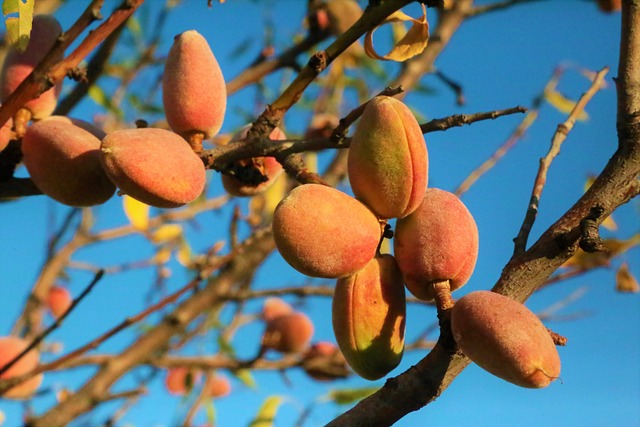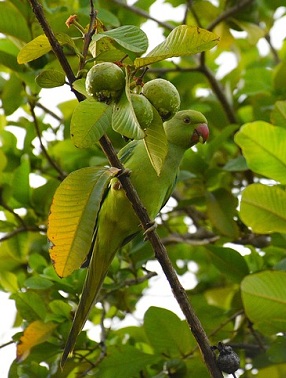Dive into the vibrant world of fruits, where the letter “T” takes center stage. From tropical treasures to tantalizing treats, these fruits offer a feast for the senses. In this collection, you’ll explore 50 unique fruits, each starting with the letter “T,” accompanied by vivid images that bring their flavors to life. Whether you’re curious about the tart tang of tamarind, the sweet juiciness of tangerines, or the exotic allure of torpedo melons, this guide has something for everyone. Discover the diverse shapes, colors, and tastes of these delightful fruits and learn about their nutritional benefits, common uses, and fascinating facts. Prepare your taste buds for a thrilling journey through the alphabet’s most tantalizing letter—”T”!
1. Tamarind Attribute Details Fruit Name Tamarind Scientific Name Tamarindus indica Nutritional Value Rich in vitamins B and C, calcium, potassium, and dietary fiber Common Uses Used in sauces, chutneys, desserts, and beverages Seasonality Available year-round in tropical regions Health Benefits Aids digestion, anti-inflammatory properties, lowers cholesterol Interesting Fact Tamarind pulp is often used in Worcestershire sauce.
2. Tangerine Attribute Details Fruit Name Tangerine Scientific Name Citrus reticulata Nutritional Value High in vitamin C, fiber, and folate Common Uses Consumed fresh, in salads, desserts, and juices Seasonality Winter (November to January) Health Benefits Boosts immune system, improves skin health, aids in digestion Interesting Fact Tangerines are a type of mandarin orange.
3. Tomato (Botanically a fruit) Attribute Details Fruit Name Tomato Scientific Name Solanum lycopersicum Nutritional Value High in vitamin C, potassium, folate, and antioxidants like lycopene Common Uses Salads, sauces, soups, stews, and juices Seasonality Summer (May to October) Health Benefits Reduces risk of heart disease, supports skin health, antioxidant-rich Interesting Fact Tomatoes were once considered poisonous in Europe.
4. Tangelo Attribute Details Fruit Name Tangelo Scientific Name Citrus × tangelo Nutritional Value Rich in vitamin C, fiber, and antioxidants Common Uses Eaten fresh, in salads, or as juice Seasonality Winter (December to February) Health Benefits Boosts immune system, promotes heart health, aids in digestion Interesting Fact Tangelos are a hybrid between a tangerine and a pomelo or grapefruit.
5. Tayberry Attribute Details Fruit Name Tayberry Scientific Name Rubus fruticosus × Rubus idaeus Nutritional Value High in vitamins C and K, manganese, and dietary fiber Common Uses Jams, jellies, desserts, and fresh consumption Seasonality Summer (June to August) Health Benefits Supports immune function, promotes healthy skin, aids in digestion Interesting Fact Tayberries are a hybrid between a raspberry and a blackberry.
6. Tamarillo Attribute Details Fruit Name Tamarillo Scientific Name Solanum betaceum Nutritional Value High in vitamins A, C, E, and potassium Common Uses Eaten raw, in salads, desserts, chutneys, and sauces Seasonality Autumn to early winter (April to August) Health Benefits Supports vision health, boosts immune system, high in antioxidants Interesting Fact Also known as the tree tomato due to its shape and taste.
7. Thimbleberry Attribute Details Fruit Name Thimbleberry Scientific Name Rubus parviflorus Nutritional Value Rich in vitamins C and A, and fiber Common Uses Fresh consumption, jams, jellies, and desserts Seasonality Summer (June to August) Health Benefits Promotes skin health, supports immune function, antioxidant-rich Interesting Fact Thimbleberries are similar to raspberries but have a flatter shape.
8. Tomatillo Attribute Details Fruit Name Tomatillo Scientific Name Physalis philadelphica Nutritional Value High in vitamin C, potassium, and fiber Common Uses Salsas, sauces, soups, and stews Seasonality Summer (June to September) Health Benefits Supports immune health, promotes healthy digestion, low in calories Interesting Fact Tomatillos are covered in a papery husk that needs to be removed before cooking.
9. Topaz Apple Attribute Details Fruit Name Topaz Apple Scientific Name Malus domestica Nutritional Value High in vitamins C and K, fiber, and antioxidants Common Uses Fresh consumption, salads, baking, and juicing Seasonality Fall (September to November) Health Benefits Supports heart health , aids digestion, promotes weight managementInteresting Fact The Topaz apple is known for its crisp texture and tart flavor.
10. Texas Persimmon Attribute Details Fruit Name Texas Persimmon Scientific Name Diospyros texana Nutritional Value Rich in fiber, vitamin C, and potassium Common Uses Eaten fresh, in desserts, or made into jams Seasonality Summer (July to September) Health Benefits Supports digestive health, high in antioxidants, promotes skin health Interesting Fact This persimmon is native to Texas and northern Mexico.
11. Tibetan Goji Berry Attribute Details Fruit Name Tibetan Goji Berry Scientific Name Lycium barbarum Nutritional Value High in vitamins A and C, iron, and antioxidants Common Uses Eaten dried, in teas, smoothies, or as a topping for cereals Seasonality Summer (June to August) Health Benefits Supports eye health, boosts immune system, rich in antioxidants Interesting Fact Goji berries have been used in traditional Chinese medicine for centuries.
12. Totapuri Mango Attribute Details Fruit Name Totapuri Mango Scientific Name Mangifera indica Nutritional Value High in vitamins A, C, and E, fiber, and antioxidants Common Uses Consumed fresh, in salads, pickles, juices, and smoothies Seasonality Summer (April to June) Health Benefits Supports digestive health, boosts immune system, promotes healthy skin Interesting Fact Totapuri mangoes have a distinct beak-like shape.
13. Truffle Attribute Details Fruit Name Truffle (Botanically considered a fruiting body of fungi) Scientific Name Tuber melanosporum (Black Truffle)Nutritional Value High in protein, fiber, and antioxidants Common Uses Used in gourmet cooking, sauces, and oils Seasonality Winter (November to March) Health Benefits Rich in antioxidants, supports immune health, anti-inflammatory properties Interesting Fact Truffles are considered a luxury food item due to their rarity and unique flavor.
14. Thai Guava Attribute Details Fruit Name Thai Guava Scientific Name Psidium guajava Nutritional Value High in vitamin C, fiber, and folate Common Uses Eaten fresh, in salads, juices, and desserts Seasonality Year-round, with peak season from November to February Health Benefits Boosts immune system, supports digestive health, promotes healthy skin Interesting Fact Thai guavas are often larger and crunchier than other guava varieties.
15. Taro Fruit (Also called Malanga or Dasheen) Attribute Details Fruit Name Taro Fruit Scientific Name Colocasia esculenta Nutritional Value High in fiber, vitamin E, potassium, and magnesium Common Uses Used in cooking and baking, especially in Asian and Pacific cuisines Seasonality Year-round, depending on the region Health Benefits Supports digestive health, rich in antioxidants, aids in blood pressure regulation Interesting Fact Taro is a staple food in many tropical regions and is used similarly to potatoes.
16. Tjampaka Attribute Details Fruit Name Tjampaka Scientific Name Annona reticulata Nutritional Value High in vitamin C, fiber, and potassium Common Uses Eaten fresh, in juices, smoothies, and desserts Seasonality Year-round in tropical regions Health Benefits Supports immune health, promotes healthy digestion, boosts energy Interesting Fact Tjampaka, also known as custard apple, has a sweet, custard-like pulp.
17. Tumbo Image source: https://5aldia.cl/frutas-y-vegetales/tumbo/ Attribute Details Fruit Name Tumbo Scientific Name Passiflora tripartita Nutritional Value High in vitamin C, fiber, and antioxidants Common Uses Eaten fresh, in desserts, and juices Seasonality Year-round, with peak season in late summer Health Benefits Supports immune health, promotes healthy digestion, high in antioxidants Interesting Fact Tumbo is also known as banana passionfruit due to its shape and flavor.
18. Tinda (Indian Round Gourd) Attribute Details Fruit Name Tinda Scientific Name Praecitrullus fistulosus Nutritional Value High in fiber, vitamins C and B, and antioxidants Common Uses Used in Indian cuisine, especially in curries and stews Seasonality Summer to early autumn (June to October) Health Benefits Aids digestion, supports weight management, boosts immune function Interesting Fact Tinda is also known as Indian round gourd or apple gourd.
19. Toronja (Grapefruit in Spanish) Attribute Details Fruit Name Toronja Scientific Name Citrus × paradisi Nutritional Value High in vitamin C, fiber, and antioxidants Common Uses Eaten fresh, in salads, juices, and cocktails Seasonality Winter (November to May) Health Benefits Supports immune health, aids weight management, improves heart health Interesting Fact Grapefruit can interact with certain medications, enhancing their effects.
20. Tropical Almond Attribute Details Fruit Name Tropical Almond Scientific Name Terminalia catappa Nutritional Value Rich in healthy fats, protein, and vitamins E and K Common Uses Eaten raw or roasted, used in desserts and snacks Seasonality Year-round in tropical regions Health Benefits Supports heart health, promotes healthy skin, high in antioxidants Interesting Fact The tree is also known as Indian almond or sea almond.
21. Tepin Pepper (Botanically a fruit) Attribute Details Fruit Name Tepin Pepper Scientific Name Capsicum annuum var. glabriusculum Nutritional Value High in vitamins A and C, fiber, and capsaicin Common Uses Used in salsas, sauces, and spicy dishes Seasonality Summer to early autumn (June to October) Health Benefits Boosts metabolism, supports immune health, anti-inflammatory properties Interesting Fact Tepin peppers are extremely hot and are considered the “mother of all peppers.”
22. Texas Blue Giant Fig Attribute Details Fruit Name Texas Blue Giant Fig Scientific Name Ficus carica Nutritional Value Rich in fiber, vitamins A, K, and potassium Common Uses Eaten fresh, dried, or used in desserts and preserves Seasonality Summer to early autumn (July to September) Health Benefits Supports digestive health, promotes bone health, high in antioxidants Interesting Fact Texas Blue Giant Figs are known for their large size and sweet flavor.
23. Tsamma Melon Attribute Details Fruit Name Tsamma Melon Scientific Name Citrullus lanatus var. citroides Nutritional Value High in water content, vitamins A and C Common Uses Eaten fresh, in salads, or used in beverages Seasonality Summer (May to August) Health Benefits Hydrating, supports immune health, promotes skin health Interesting Fact Tsamma melons are wild melons found in the Kalahari Desert.
24. Thorn Apple Attribute Details Fruit Name Thorn Apple Scientific Name Datura stramonium Nutritional Value Contains alkaloids like atropine, scopolamine, and hyoscyamine Common Uses Not typically consumed due to toxicity, used in traditional medicine Seasonality Summer to autumn (July to October) Health Benefits Toxic, used with caution in traditional medicine for its psychoactive properties Interesting Fact Thorn apple is highly toxic and can cause hallucinations.
25. Two-Winged Silverbell (Seedpod is the fruit)
Image source: https://bowerandbranch.com/
Attribute Details Fruit Name Two-Winged Silverbell Scientific Name Halesia diptera Nutritional Value Not typically consumed Common Uses Mainly ornamental, used in landscaping Seasonality Spring to early summer (April to June) Health Benefits Not applicable Interesting Fact The tree is known for its distinctive two-winged seedpods.
26. Taa’t (African Star Apple) Attribute Details Fruit Name Taa’t (African Star Apple) Scientific Name Chrysophyllum albidum Nutritional Value High in vitamin C, iron, and calcium Common Uses Eaten fresh or used in jams and beverages Seasonality Late autumn to early winter (October to December) Health Benefits Supports immune health, rich in antioxidants, promotes skin health Interesting Fact The fruit is also known as Agbalumo in Nigeria.
27. Torpedo Melon (Korean Melon) Attribute Details Fruit Name Torpedo Melon (Korean Melon) Scientific Name Cucumis melo Nutritional Value High in vitamins A and C, fiber, and water Common Uses Eaten fresh, in salads, or as a dessert Seasonality Summer (May to August) Health Benefits Hydrating, supports immune health, promotes digestive health Interesting Fact Korean melons have a crisp texture and are less sweet than other melons.
28. Tautra Strawberry Attribute Details Fruit Name Tautra Strawberry Scientific Name Fragaria × ananassa Nutritional Value High in vitamin C, manganese, and antioxidants Common Uses Eaten fresh, in desserts, jams, and smoothies Seasonality Summer (June to August) Health Benefits Supports immune health, promotes heart health, antioxidant-rich Interesting Fact Tautra strawberries are known for their intense flavor and aroma.
29. Tavane
Image source: www.treedom.net
Attribute Details Fruit Name Tavane Scientific Name Inga edulis Nutritional Value High in protein, fiber, and vitamins A and C Common Uses Eaten fresh, in desserts, or as a sweetener Seasonality Year-round in tropical regions Health Benefits Supports digestive health, boosts immune system, promotes healthy skin Interesting Fact Tavane is also known as ice cream bean due to its sweet, fluffy pulp.
30. Thai Eggplant Attribute Details Fruit Name Thai Eggplant Scientific Name Solanum melongena Nutritional Value High in fiber, vitamins B and C, and antioxidants Common Uses Used in curries, stir-fries, and salads Seasonality Year-round in tropical regions Health Benefits Supports heart health, promotes healthy digestion, rich in antioxidants Interesting Fact Thai eggplants are often used in traditional Thai green curries.
31. Torobeli (Tropical Papaya) Attribute Details Fruit Name Torobeli (Tropical Papaya) Scientific Name Carica papaya Nutritional Value High in vitamins A, C, and E, fiber, and antioxidants Common Uses Eaten fresh, in smoothies, salads, and desserts Seasonality Year-round in tropical regions Health Benefits Supports immune health, aids digestion, promotes healthy skin Interesting Fact Papayas contain papain, an enzyme that aids in digestion.
32. Tumanpa Fruit Attribute Details Fruit Name Tumanpa Fruit Scientific Name Pouteria sapota Nutritional Value High in vitamin A, fiber, and healthy fats Common Uses Eaten fresh, in milkshakes, smoothies, and desserts Seasonality Year-round in tropical regions Health Benefits Supports eye health, boosts immune function, promotes healthy skin Interesting Fact Tumanpa, also known as sapote, has a creamy texture and a unique, rich flavor.
33. Trelawney Attribute Details Fruit Name Trelawney Scientific Name Psidium guajava Nutritional Value High in vitamin C, fiber, and folate Common Uses Eaten fresh, in salads, juices, and desserts Seasonality Year-round, with peak season from November to February Health Benefits Boosts immune system, supports digestive health, promotes healthy skin Interesting Fact Trelawney is a variety of guava grown mainly in Jamaica.
34. Thar Desert Plum Attribute Details Fruit Name Thar Desert Plum Scientific Name Cordia myxa Nutritional Value Rich in fiber, vitamins A and C Common Uses Eaten fresh or used in traditional medicines Seasonality Summer to autumn (May to October) Health Benefits Supports digestive health, boosts immune function, high in antioxidants Interesting Fact This fruit is also known as Lasura in India.
35. Turkish Fig Attribute Details Fruit Name Turkish Fig Scientific Name Ficus carica Nutritional Value Rich in fiber, vitamins A, K, and potassium Common Uses Eaten fresh, dried, or used in desserts and preserves Seasonality Summer to early autumn (July to September) Health Benefits Supports digestive health, promotes bone health, high in antioxidants Interesting Fact Turkey is one of the largest producers of figs in the world.
36. Tupi Blackberry Attribute Details Fruit Name Tupi Blackberry Scientific Name Rubus fruticosus Nutritional Value High in vitamins C and K, manganese, and dietary fiber Common Uses Jams, jellies, desserts, and fresh consumption Seasonality Summer (June to August) Health Benefits Supports immune function, promotes healthy skin, aids in digestion Interesting Fact Tupi blackberries are a cross between Brazilian wild blackberries and traditional blackberries.
37. Targhee Attribute Details Fruit Name Targhee Scientific Name Malus domestica Nutritional Value High in vitamins C and K, fiber, and antioxidants Common Uses Fresh consumption, salads, baking, and juicing Seasonality Fall (September to November) Health Benefits Supports heart health, aids digestion, promotes weight management Interesting Fact The Targhee apple is known for its crisp texture and sweet-tart flavor.
38. Tanghulu Attribute Details Fruit Name Tanghulu Scientific Name Not applicable (candied fruit) Nutritional Value High in sugars and carbohydrates due to candying process Common Uses Popular street snack in China, typically made with hawthorn fruit Seasonality Year-round, as it’s a preserved product Health Benefits Limited due to high sugar content; provides quick energy Interesting Fact Tanghulu is traditionally made by skewering fruit and coating it in hardened sugar.
39. Temecula Sweet Attribute Details Fruit Name Temecula Sweet Scientific Name Fragaria × ananassa Nutritional Value High in vitamin C, manganese, and antioxidants Common Uses Eaten fresh, in desserts, jams, and smoothies Seasonality Summer (June to August) Health Benefits Supports immune health, promotes heart health, antioxidant-rich Interesting Fact Temecula Sweet strawberries are known for their intense flavor and aroma.
40. Tasmanian Cherry Attribute Details Fruit Name Tasmanian Cherry Scientific Name Prunus avium Nutritional Value High in vitamins A and C, fiber, and antioxidants Common Uses Eaten fresh, in desserts, jams, and beverages Seasonality Late spring to summer (November to February in the Southern Hemisphere) Health Benefits Supports immune health, promotes heart health, rich in antioxidants Interesting Fact Tasmania is known for producing some of the finest cherries in the world.
41. Tendu Fruit Attribute Details Fruit Name Tendu Fruit Scientific Name Diospyros melanoxylon Nutritional Value High in fiber, carbohydrates, and vitamin C Common Uses Eaten fresh, used in traditional medicine, and for making beedi (Indian cigarettes) Seasonality Summer (April to June) Health Benefits Supports digestive health, boosts immune function, provides energy Interesting Fact Tendu leaves are commonly used in India to roll tobacco into beedis.
42. Tutti Frutti Attribute Details Fruit Name Tutti Frutti Scientific Name Not applicable (a blend of various fruits, typically candied papaya) Nutritional Value High in sugars and carbohydrates due to candying process Common Uses Used in baked goods, ice creams, and desserts Seasonality Year-round, as it’s a preserved product Health Benefits Limited due to high sugar content; provides quick energy Interesting Fact Tutti Frutti means “all fruits” in Italian, though it’s usually made with just one or two types of fruit.
43. Tropea Red Onion Attribute Details Fruit Name Tropea Red Onion Scientific Name Allium cepa Nutritional Value High in fiber, vitamins C and B6, and antioxidants Common Uses Used in salads, pickles, and cooking for its sweet flavor Seasonality Summer (June to September) Health Benefits Supports heart health, boosts immune function, anti-inflammatory Interesting Fact Tropea red onions are famous for their mild and sweet flavor.
44. Taperiba Attribute Details Fruit Name Taperiba Scientific Name Spondias dulcis Nutritional Value High in vitamin C, fiber, and iron Common Uses Eaten fresh, in juices, jams, and pickles Seasonality Summer to early autumn (July to October) Health Benefits Boosts immune system, supports digestive health, promotes healthy skin Interesting Fact Taperiba is also known as golden apple or June plum in some regions.
45. Tacso (Passiflora) Attribute Details Fruit Name Tacso Scientific Name Passiflora tarminiana Nutritional Value High in vitamins A and C, fiber, and antioxidants Common Uses Eaten fresh, in juices, and desserts Seasonality Year-round, depending on the region Health Benefits Supports immune health, promotes skin health, antioxidant-rich Interesting Fact Tacso is a type of passionfruit with a distinct, elongated shape.
46. Terebinth Fruit Attribute Details Fruit Name Terebinth Fruit Scientific Name Pistacia terebinthus Nutritional Value High in antioxidants, healthy fats, and fiber Common Uses Used in traditional medicine, oil extraction, and as a flavoring agent Seasonality Autumn (September to November) Health Benefits Supports heart health, promotes skin health, rich in antioxidants Interesting Fact Terebinth fruit is often used to make a traditional Greek resin called mastic.
47. Talia Fruit
Image source: Talia Fruit
Attribute Details Fruit Name Talia Fruit Scientific Name Beilschmiedia pendula Nutritional Value High in fiber, vitamins A and C, and potassium Common Uses Eaten fresh or used in traditional medicine Seasonality Year-round in tropical regions Health Benefits Supports digestive health, boosts immune function, promotes healthy skin Interesting Fact Talia fruit is a lesser-known tropical fruit found in some African regions.
48. Tetrastigma Fruit
Attribute Details Fruit Name Tetrastigma Fruit Scientific Name Tetrastigma voinierianum Nutritional Value High in fiber, vitamins C and E Common Uses Eaten fresh, in juices, and traditional medicine Seasonality Year-round in tropical regions Health Benefits Supports immune health, promotes digestive health, antioxidant-rich Interesting Fact Tetrastigma fruit is often used in traditional Chinese medicine.
49. Tzapotl Attribute Details Fruit Name Tzapotl Scientific Name Casimiroa edulis Nutritional Value High in vitamin C, fiber, and potassium Common Uses Eaten fresh, in juices, and desserts Seasonality Late summer to autumn (August to October) Health Benefits Supports immune function, aids digestion, promotes healthy skin Interesting Fact Tzapotl, also known as white sapote, has a flavor reminiscent of custard.
50. Torrey Pine Nut Attribute Details Fruit Name Torrey Pine Nut Scientific Name Pinus torreyana Nutritional Value High in healthy fats, protein, and vitamins E and K Common Uses Eaten raw or roasted, used in baking and cooking Seasonality Late summer to early autumn (August to October) Health Benefits Supports heart health, provides energy, promotes healthy skin Interesting Fact The Torrey pine is one of the rarest pine species in the world and is found only in California, USA.
Visited 3 times, 1 visit(s) today


















































